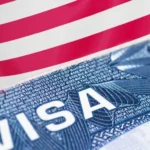Minimal fees, low minimums, and an extensive ATM network are often characteristics of the finest checking accounts. Additionally important are customer and digital experiences, and it helps if the account generates some attention. Take into consideration your spending preferences and demands while looking for the ideal checking account for you.
Methodology
157 checking accounts at 66 financial institutions, including a mix of conventional brick-and-mortar banks, internet banks, and credit unions, were examined by Forbes Advisor to develop this list. In the areas of costs, access, customer service, digital experience, minimums, and APY, we evaluated each account using 17 different data points.
The weighting given to each category is as follows:
- Fees: 50%
- Access to branches and ATMs: 15%
- Customer satisfaction: 10%
- 10% of experience with digital
- Lowest: 10%
- APY: 5%
Within each category, certain elements were taken into account, such as the monthly fee, the option to waive the monthly fee, the overdraft fee, the NSF fee, other fees, the ATM network, branch accessibility, the Better Business Bureau rating, the Trustpilot rating, the availability of live chat and mobile apps, the availability of online bill payment, the accessibility of online banking, the minimum deposit and minimum balance requirements.
The highest-scoring checking accounts were those with no or very low fees, minimal minimum balance requirements, and excellent customer service and digital experience ratings. The checking account has to be accessible nationwide in order to be included on this list.
What Is a Checking Account?
A checking account is a form of bank account that gives you convenient access to your money at all times and allows you to deposit and withdraw money as you see fit. A checking account may be used to handle your everyday financial operations, pay bills, and make purchases. These accounts may be established at physical banks as well as internet and credit union banks. They are designed to be used often and to save money for future expenditures.
A Checking Account’s Operation
Checking accounts are designed to save funds for routine spending and pressing requirements. Typically, they include a debit card that may be used for ATM withdrawals, payments, and purchases. Savings accounts typically have more restrictions on withdrawals than checking accounts, however your bank may place a daily or weekly cap on the amount you may take out of an ATM or spend with a debit card.
Although more banks now offer interest-bearing checking accounts, the majority of checking accounts don’t pay interest. For the upkeep of your checking account, your bank may charge a monthly fee, or it may demand that you maintain a certain balance in order for the cost to be waived.
What Amount Should You Maintain in a Checking Account?
There is no standard amount you should retain in your checking account since every person’s financial position is unique. In order to cover unforeseen costs, it’s a good idea to have one to two months’ worth of living expenses in your bank account.
Keep track of your monthly spending to obtain a sense of how much you should put aside each month. Having an additional financial reserve can help you be ready for any unforeseen circumstances.
Types of Checking Accounts
There are several sorts of checking accounts to accommodate different banking requirements, such a:
Standard checking account.
A typical or normal checking account gives you the ability to do basic financial transactions, such as writing checks, and includes a debit card for use at stores and ATMs.
An upscale checking account
Upgraded banking services are available with premium checking accounts. You could have to satisfy greater deposit or balance criteria, or you might have to pay a monthly charge, depending on the bank. As your balance increases, premium accounts often provide more alluring features.
Checking account that pays interest
As the name implies, certain checking accounts pay interest. An increasing variety of high-yield checking accounts are now available. These accounts are often offered by banks that require you to have a minimum amount in order to earn interest.
Checking account with rewards
Just like a credit card, checking accounts with rewards allow you to accrue rewards for making purchases. This often implies that you will get cash back for every debit card transaction.
Student checking accounts
Student checking accounts are designed for young people and college students who want to create their first checking account. Overdraft protection and minimal or no fees are frequent features of these accounts.
Second-chance checking account
People with a spotty financial history can be eligible for one. These accounts often have monthly fees that cannot be avoided.
Pros and Cons of Checking Accounts
The most typical sort of bank account used for daily transactions is a checking account. Utilizing a checking account has a number of advantages, but there are also some drawbacks to take into mind.
Pros
- When you need your money, checking accounts make it simple to get to it.
- Paychecks may be deposited immediately into your account via direct deposit.
- Banks and credit unions provide checking account insurance of up to $250,000 per depositor, per form of account ownership, and per financial institution.
Cons
- Checking accounts may have criteria to avoid costs or levy monthly fees.
- Checking accounts often don’t pay interest.
- An excessive balance in your bank account may hinder your saving attempts.
How to Choose a Checking Account
There are various checking accounts available, but picking one isn’t always straightforward. When looking for a new checking account, keep the following things in mind:
Fees
Keep costs to a minimal since you’ll utilize a checking account for your regular transactions. Keep an eye out for overdraft, monthly maintenance, and out-of-network ATM costs. Find a bank or credit union that keeps such costs to a minimum by taking a look at your banking practices to determine which fees are most important to you.
Minimums
To start a checking account, you may need to deposit a specified minimum amount with certain banks and credit unions. In order to get the APY or avoid fees, they could additionally ask that you maintain a certain minimum amount. Make sure you can fulfil the conditions of the bank or credit union before opening an account. Alternately, seek for an account with no minimum balance limitations at all.
APY
Checking accounts that don’t pay interest. But while searching for an account, keep the APY in mind if you want to earn interest on your funds.
Customer support it’s crucial to be able to contact a customer support agent if a problem or query should occur, whether you bank online or in a branch. They must be accommodating and responsive as well.
Electronic experience
Be on the lookout for banks and credit unions with cutting-edge online and mobile banking technologies, especially if you often do your banking this way.
Safety
Make sure your bank account is insured by the Federal Deposit Insurance Corporation (FDIC). In the case of a bank collapse, it offers insurance of up to $250,000 per depositor, per bank, for each type of account ownership. In credit unions, look for insurance from the National Credit Union Administration (NCUA).
Taking into consideration your banking practices can help you choose which checking account features are most beneficial to you.
Consider finding a checking account that doesn’t impose overdraft fees if, for instance, you often tend to overdraw your account. If you like having access to your finances wherever you are, choose a bank account with a top-rated mobile app. Your actions may point you in the direction of the finest checking account for you.
How to Open a Checking Account
Online checking account opening is available from many banks and credit unions. You must apply in person at a nearby location for the rest. Your bank will request personal details from you, such as:
- total name
- Place of residence
- Driver’s license or other picture ID issued by the government
- Social Security number
If your application for an account is accepted, you may often fund it with cash, a cheque, or a transfer from an outside account. Although most internet checking accounts do not allow for cash deposits.
Checking vs. Savings Accounts
Savings accounts are used for money saving, whilst checking accounts are utilized for daily purchases. Listed below are some key contrasts between the two:
Purpose
Spending is done via checking accounts. Accounts for savings are for saving.
Withdrawals
Checking accounts typically permit an infinite number of withdrawals. Most savings accounts have a monthly withdrawal limit of six.
Features
Debit cards, paper checks, overdraft protection, and other services for spending are often included with checking accounts. Savings accounts may provide interest returns and resources for achieving savings objectives.
Interest
The majority of checking accounts do not pay interest, but some do. Interest is frequently paid on savings accounts.
Bottom Line
One of the finest resources for handling your regular money is a checking account. While some banks levy service fees or set minimum balance requirements, many organizations do not. If you don’t care about in-person banking assistance, an online checking account can be more advantageous than a local bank. Establish your banking requirements and preferences, then compare accounts that suit your way of life.
Frequently Asked Questions (FAQs)
What age is the minimum need to open a checking account?
You must be at least 18 years old to establish an individual checking account with the majority of financial institutions. If you’re under 18, you may create a custodial checking account with a parent or legal guardian.
How can I obtain a bonus for my checking account?
Some financial institutions provide incentives for establishing a checking account in an effort to draw in new clients and deposits. These promos are often only available for a limited time, although they are frequently extended. Keeping an eye on the top bank bonuses is the easiest approach to take advantage of one of these deals.
Where can I locate the number for my checking account?
Your checks’ bottoms carry the routing and checking account numbers. You may access your account details, including your account number, on many banks’ mobile apps or websites.







